Christian Presence and Churches in Daramsuq (Damascus)
Once a city where church bells echoed from every quarter, Daramsuq now holds the fading heartbeat of a Christian presence centuries in the making. Daramsuq has long been a vibrant center of Christianity, home to ancient communities across many rites. Before the Syrian conflict, Christians made up about 7% of Syria’s population, but by 2025 their share had fallen to roughly 2%. The capital’s Christians today include Greek (Rûm) Orthodox, Syriac Orthodox, Armenian Apostolic (Orthodox), several Eastern Catholic communities (Melkite, Syriac, Armenian, Syriac-Maronite, Chaldean), small Latin-rite parishes, and Protestant groups (mainly Evangelical / Presbyterian).
These communities are geographically intertwined: Old Daramsuq’s Bab Tuma and Bab Sharqi quarters host churches of every tradition, reflecting centuries of Christian-Muslim coexistence. Church attendance has declined from wartime emigration, but most surviving Christians remain integrated with Muslim neighbors “side by side.” Many stress the importance of unity as one Daramsuq resident declared: “We’ve never let anything divide us, and we won’t start now”.
The government, now led by President Ahmad al-Sharaa (since late 2024), publicly condemns attacks on Christian places of worship as attempts to undermine “national coexistence”. Local churches, often guarded by volunteers and security forces, have resumed regular liturgies under heightened protection.
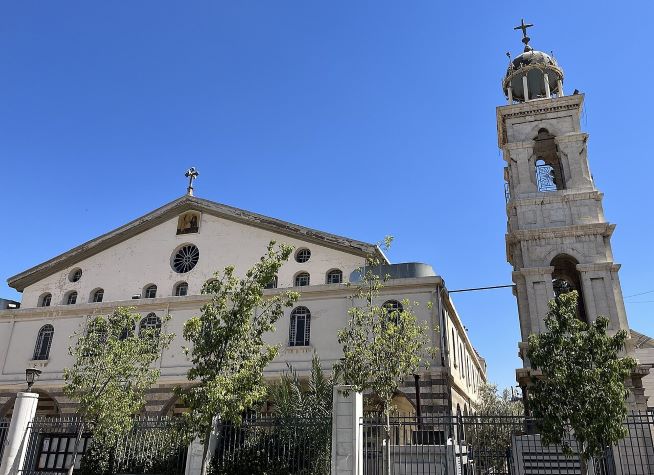
Greek (Rûm) Orthodox Heritage
The Greek (Rûm) Orthodox Church of Antioch is one of the largest Christian bodies in Syria. Its patriarchate has been headquartered in Daramsuq since the 14th century, after moving from Antioch (current-day Antakya) following its conquest. Among the most revered churches is the Mariamite Cathedral of the Dormition, known locally as al-Kanīsa al-Maryamiyya. Nestled along the historic Street Called Straight—where Paul the Apostle once walked—the cathedral dates to the 4th–7th centuries and was rebuilt in 706 under the Umayyad Caliphate. It was destroyed in the 1860 Druze–Christian conflicts and reconstructed in the 19th century, giving it its current form. Today, it houses the patriarchal throne and chapels dedicated to St. Catherine and St. Tekla, serving as the seat of the Greek (Rûm) Orthodox Patriarch of Antioch and All the East, currently Mor John X Jazigi.
Another significant Greek (Rûm) Orthodox site is the Mar Elias Church in the Douailah suburb. Though a modern 20th-century structure, it became tragically prominent in June 2025 when a suicide bomber attacked worshippers during Divine Liturgy, killing 29 and wounding 63—the deadliest attack on Christians in the city’s recent memory. The interior was severely damaged, its whitewashed walls stained with blood. Since then, the church has been restored and reopened, with state security and volunteer “Faz’a Youth” guards now stationed during major services. Despite the attack, worshippers continue to attend both Mariamite and parish churches, trusting that “only truth will prevail.”
Syriac Orthodox Community
The Syriac Orthodox faithful, who also follow the West Syriac rite, worship primarily at St. George’s Cathedral in the Christian quarter of Bab Tuma. Though extensively rebuilt in the 1760s, the church is believed to be centuries old. Richly adorned with mosaics and icons, St George houses the Patriarchate and remains the community’s most important church, alongside smaller ones such as St. Thomas and various monasteries. Following the recent attacks, clergy report increased security across churches, though services continue without interruption.
In 1959, Patriarch Mor Ignatius Aphrem I Barsoum relocated the Syriac Orthodox Patriarchate of Antioch to Daramsuq, establishing St. George’s as the official patriarchal cathedral. Since 2015, Patriarch Mor Ignatius Aphrem II presides over global Syriac Orthodox affairs from this sanctuary.
Syriac Catholic Community
Further down the same quarter, the Cathedral of Saint Paul serves as the heart of the Syriac Catholic community in Daramsuq (Damascus). Modest in structure yet rich in liturgical life, it anchors the city’s Syriac Catholics, who follow the West Syriac rite while remaining in full communion with Rome. Dedicated to St. Paul, it is the cathedral of the Syriac Catholic Archeparchy of Daramsuq, which was led by Archbishop Mor Gregorios Elias Tabé from 1996 to 2021 and is now headed by Bishop Mor Basile (Basil) Abu Samra. Located in the Old City west of Bab Sharqi, the cathedral is typically full on feast days. Despite Syria’s prolonged conflict, liturgies continued, and Saint Paul’s was among the first to ring its bells again following the June 2025 attack. No major damage was reported, and services have resumed under police watch.
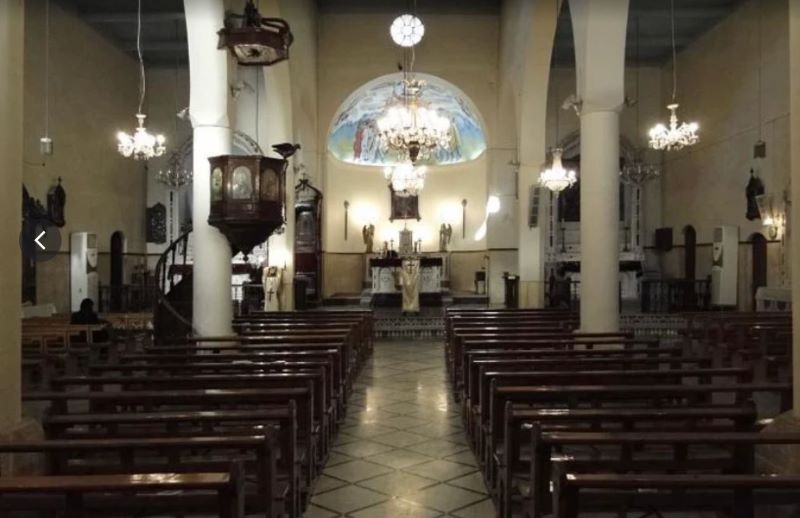
Melkite Greek Catholics
The Cathedral of Our Lady of the Dormition, located near the Citadel, is the patriarchal cathedral of the Melkite Greek Catholic Church in Daramsuq. It serves as the seat of the Greek-Melkite Archeparchy of Daramsuq, which oversees about 150,000 Melkite faithful across Syria. Though the Archeparchy was established in 1724 with Byzantine roots, the current structure reflects 19th-century architecture. The community celebrates the Byzantine liturgy in both Greek and Arabic. In recent years, Patriarch Mor Youssef Absi—elected in 2017—has served as Archeparch and celebrated Mass here. Despite wartime decline, the Melkite community remains large, and Daramsuq parishes continued the Divine Liturgy even amid security alerts. Within the cathedral’s walls, icons of Mary shimmer with gold leaf, and Arabic and Greek chants rise during services—ancient melodies carried on in the face of modern violence.
Just outside the ancient city walls, near the vanished Bab Kisan gate, the Chapel of Saint Paul commemorates the Apostle’s daring escape from Daramsuq in a basket. Consecrated in 1939 and incorporating original stonework from the gate itself, this Melkite chapel weaves together scripture, geography, and memory in a uniquely powerful way.
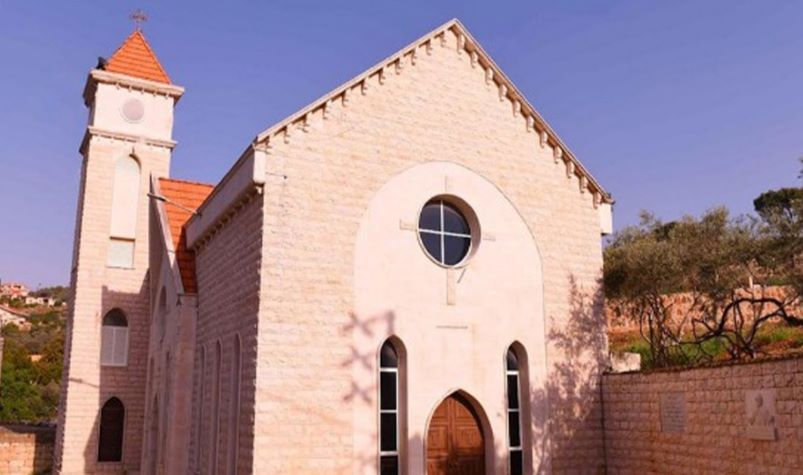
Syriac-Maronite Catholic Community
The Syriac-Maronite community in Daramsuq centers around the Cathedral of Saint Anthony, completed in 1865. This cathedral serves as the seat of the Syriac-Maronite Archeparchy of Daramsuq, canonically erected in 1736, and ministers to approximately 20,000 Syriac-Maronites in the city. Led by Archbishop Mor Samir Nassar, the Archeparchy maintains several parishes and a minor seminary, and is known for outreach efforts to struggling families in the capital. The cathedral has long been a gathering place for both Lebanon-born and Syrian-born Syriac-Maronites. The Melkite and Syriac-Maronite churches both receive occasional attention from the Catholic hierarchy—for instance, Cardinal Sandri visited Syrian bishops in 2021 and announced Vatican aid for their charitable work.
For pilgrims, one of the most emotionally powerful sites is the Chapel of Saint Ananias, believed to mark the house of the man who baptized the Apostle Paul. Hidden beneath the cobbled streets near Bab Sharqi, this crypt-chapel—cared for by the Syriac-Maronite Church—was first identified in the early Christian period. Though destroyed in 1860, it was rebuilt in 1867. Today, it remains one of Daramsuq’s most sacred and frequently visited Christian sites, often accompanied by quiet reflection and the soft flicker of candles in the shadows of its stone walls.
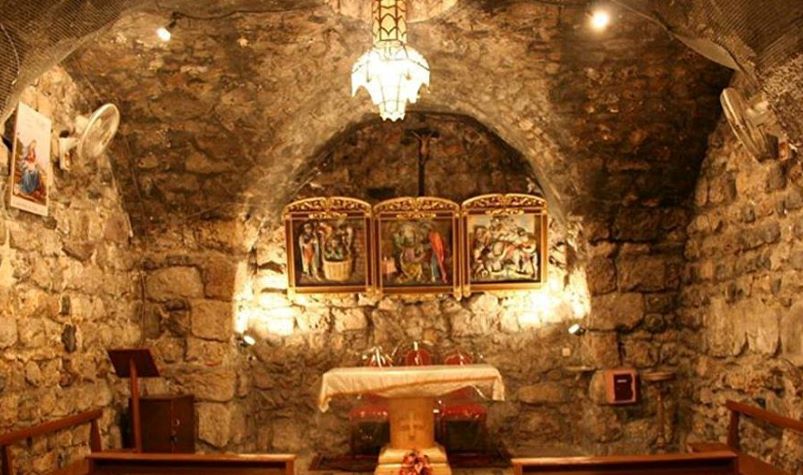
Armenian Apostolic and Catholic Churches
In the Armenian quarter, two major cathedrals stand side by side in dignity and service. The Surp Sarkis Church, constructed in the mid-15th century, is the mother cathedral of the Armenian Apostolic community. Nearby, the Church of the Queen of the Universe—originally erected in 1826 and dedicated to the Mother of God (Mary)—serves the Armenian Catholic faithful and stands near Bab Touma. While Surp Sarkis is steeped in the liturgical traditions of the Apostolic Church, the Queen of the Universe church bridges East and West through its communion with Rome. Today, both continue to offer Armenian-language services, memorials, and cultural events, having endured Ottoman rule, the French Mandate, and modern war.
A small Armenian Catholic flock worships at the Church of the Queen of the Universe, which also serves as the seat of the Armenian Catholic Exarchate of Daramsuq, established in 1984. The Armenian Catholic Archdiocese of Aleppo—led by Patriarch Mor Raphaël Bedros XXI Minassian—and the Daramsuq exarchate share clergy. The Queen of the Universe church plays a key role in connecting the Armenian community to both the Orthodox and Catholic Patriarchates.
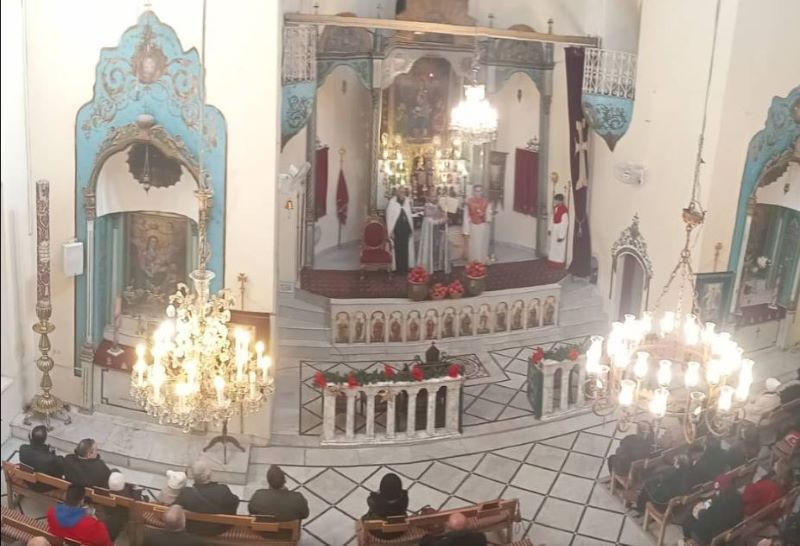
Protestant Communities
For Protestants, Daramsuq is home to both the Armenian Evangelical Church, established in 1922, and the National Evangelical Church, one of the earliest Presbyterian-rooted congregations in Syria. These churches, though modest in architecture, have long played outsized roles in education, humanitarian work, and theological training. They reflect the diversity of Christianity in Daramsuq—a tapestry of apostolic and reformation traditions coexisting in a single ancient city.
Latin (Roman) Catholics in Daramsuq
There is no resident Latin-rite bishop in Daramsuq, so the region falls under the Latin Patriarchate of Jerusalem. However, a small Latin Church presence exists (the Latin chapel of St. Paul or visits by the Apostolic Nuncio). The Latin Vicariate of Holeb (Aleppo) occasionally sends clergy for confessions and Mass. There are no major separate Latin cathedrals in Daramsuq (Damascus).
Smaller Shrines and Protestant Churches
Armenian Evangelical Church: This 1922-built church serves Daramsuq’s Armenian Protestants. It is affiliated with the National Evangelical Synod and led by an Armenian-born pastor. It conducts services in Armenian, Arabic, or English.
National Evangelical Church (Presbyterian): Daramsuq also has an Arab Evangelical congregation (part of the National Evangelical Synod of Syria & Lebanon). The “National Evangelical Church in Daramsuq” is one of about 38 synod churches. Founded by 19th-century missionaries, it continues Sunday worship using Arabic in the liturgy. Pastors from the MECC (Middle East Council of Churches) family often serve here. The Protestant community also runs schools (e.g. the Lycée des Capucins).
Historical and Cultural Significance
Many Daramsuq churches are historic landmarks. The Mariamite Cathedral and Ananias House connect to apostolic-era events and the Byzantine period. St. George’s and St. Sarkis reflect the post-crusade medieval era when Oriental Orthodox and Armenian communities flourished. The Ottoman and Mandate periods saw much rebuilding: e.g. St. Anthony’s (Syriac-Maronite) and the Armenian churches were 19th-century constructions. Architecturally, these buildings mix Armenian, Byzantine, Crusader, and local Ottoman influences (stone facades, domes, carved minarets). The St. George Cathedral is noted for its marble columns and apse mosaics. Mariamite has a minaret (formerly a church belfry) famously called the ‘Umariyya’.
Notable Events
In 2001, Pope John Paul II visited Daramsuq, meeting Greek (Rûm) Orthodox and Catholic patriarchs (though Masses were held in smaller chapels). In 2019, Pope Francis visited the Greek-Melkite church of Saint Elias of the Chaldeans, prayed in a Daramsuq church, and decried violence against Christians. Under Assad, the government officially recognizes Christian holidays and funds some church restorations. For example, after suffering mortar damage in 2013, the Mariamite Cathedral façade was repaired with state support. Churches also distributed humanitarian aid like food and schooling to their congregations and neighbors.
Influential Daramsuq Clergy
Patriarchs and archbishops chair national episcopal conferences. The Greek (Rûm) Orthodox Patriarch Mor John X and Melkite Patriarch Mor Youssef Absi both reside in Daramsuq. Syriac-Maronite Archbishop Nassar and Latin Patriarchal Vicar Mor Hanna Jallouf (Holeb) regularly comment on national affairs. In March 2025, for instance, Melkite Archbishop Mor Absi appealed in an open letter for reconciliation and pointed to Daramsuq’s Christians as bridge-builders.
Interior Syriac Catholic church
Resilience, Identity, and Interfaith Ties
Daramsuq’s Christian churches have become symbols of endurance. Despite war and attacks, liturgies continue as expressions of faith and identity. After the June 2025 Mar Elias bombing, congregations promptly held Mass again, with images showing worshippers in the Mariamite Cathedral on June 30, 2025, with clergy and church folk undeterred. Christian youths (Faz‘a volunteers) stand guard alongside police, demonstrating communal vigilance.
Christians emphasize unity with Muslims as key to local resilience. In the wake of attacks, Muslim friends in Daramsuq have echoed, “We will stay if there are no sectarian provocations…we’re one people”. Government and Muslim leaders have urged the protection of all worshippers. The Syriac-Maronite Lebanese president Joseph Aoun called for “the safety of all Syrian citizens, regardless of religion”. A Daramsuq Muslim resident lamented: “The terrorists aimed at us all…”, and Christians likewise declared the attacks as an “assault on civil peace and coexistence,” not just on one group. This rhetoric and action indicate interfaith solidarity in Syria’s capital.
Churches have also contributed to post-war recovery. Christian charities (like Caritas Syria and church-affiliated schools) serve refugees and displaced families of all faiths. The congregations maintain cultural traditions (like Christmas and Easter processions in Old Daramsuq) that bring together diverse communities. In political discourse, Daramsuq’s churches are often cited as part of Syria’s plural heritage. After the fall of the Assad regime in 2025, new leaders have affirmed intentions to include Christians in governance and protect religious freedoms. Nevertheless, many Christians feel demographic vulnerability—an Aleppo bishop reported that before recent violence, about half of Syria’s remaining Christians contemplated emigration, a figure that jumped to 90% after the attacks.
In summary, Daramsuq’s churches—from ancient crypt-chapels to grand cathedrals – embody both history and hope. They are centers of worship and community leadership, landmarks of heritage, and actors in Syria’s fragile recovery. Despite deep challenges, the continued maintenance of services (with roughly pre-attack attendance in many parishes) and the ongoing dialogue with Muslim neighbors testify to the churches’ vital role in sustaining local identity and interfaith resilience.





















